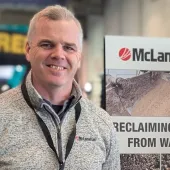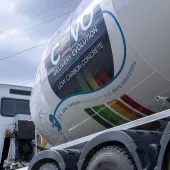Why we need to apply whole-life carbon thinking

First published in the April 2022 issue of Quarry Management
By Emma Hines, senior manager - sustainability, Tarmac
The transition to a net-zero society is a great opportunity to consider the carbon performance of our built environment over the long term. Yet, there is a danger that the UK prioritizes a more simplistic embodied-carbon evaluation that overlooks whole-life impacts of buildings and assets that will need to last for generations.
Here is my guide to why whole-life measurement must be central to the procurement and selection of low-carbon industrial materials.
What is whole-life carbon measurement?
Whole-life carbon analysis measures anticipated impacts over the lifetime of a building or infrastructure asset. It considers not only the extraction of raw materials, manufacturing, product miles, and construction, but also takes account of the impact on emissions during the use of the asset, how both the materials selected and the design can influence these emissions, and what happens at the end of life.
Why is measuring whole-life emissions important?
Whole-life measurement is critical to achieving net zero and moving towards a circular economy. Embodied carbon is a more simplistic and short-term approach because it fails to consider performance over an asset’s lifecycle, risking sub-optimal design and specification. It does not give enough consideration to aspects such as longevity, resilience to fire, flood, and pests, or the need for maintenance and repair.
Critically, embodied carbon does not assess how the design and the materials themselves can reduce carbon emissions during use, or the impacts on carbon at end of life, where the building or asset can be designed to be repurposed, deconstructed, or demolished, and how components can be reused, recovered, recycled, or disposed. These lifecycle stages are critical to determining the overall carbon performance and are integral to making the best design decisions and material choices.
In terms of managing our own environmental impact as a business and supporting our commitment to be net zero by 2050, here at Tarmac we are taking action to reduce carbon from our supply chain, operations, transport, and products. We also prioritize how our products and solutions can improve the whole-life performance of buildings and infrastructure.
How can clients and contractors cut carbon now and over the lifecycle of an asset?
Tackling carbon requires an industry-wide approach and early engagement to shape and embed whole-life measurement from the outset. The reality, from my experience, is that carbon measurement is all too often an afterthought.
At Tarmac, we are still inundated with retrospective requests for carbon performance data at the end of a project. This approach will not deliver the best environmental performance or outcomes. Instead, we need to have discussions up front with clients and contractors to collectively consider how to cut carbon during construction and across the lifecycle of an asset.
The transition to a net-zero society requires a greater understanding of the in-use performance of buildings and materials. Specifying for the long term and making informed material choices that consider whole-life carbon, fire, and resilience is central to buildings that will perform in a net-zero society and not become stranded assets.
- Subscribe to Quarry Management, the monthly journal for the mineral products industry, to read articles before they appear on Agg-Net.com








